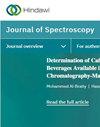Distributed Compressed Hyperspectral Sensing Imaging Incorporated Spectral Unmixing and Learning
IF 2.1
4区 化学
Q4 BIOCHEMICAL RESEARCH METHODS
引用次数: 0
Abstract
Compressed hyperspectral imaging is a powerful technique for satellite-borne and airborne sensors that can effectively shift the complex computational burden from the resource-constrained encoding side to a presumably more capable base-station decoder. Reconstruction algorithms play a pivotal role in compressive imaging systems. Traditional model-based reconstruction approaches are computationally burdensome and achieve limited success. Deep learning-based approaches, while improving in reconstruction accuracy and speed, depend heavily on data, which is a major challenge for satellite-borne hyperspectral compressed imaging. In this article, we combine the respective advantages of model-based and learning-based approaches in a distributed compressed hyperspectral sensing framework, employing linear mixed model assumptions and spectral library learning to simultaneously improve the reconstruction speed and accuracy without using a large amount of additional hyperspectral data. First, the relationship between the CS band and the key band is learned from the spectral library to ensure that the key band endmembers can be accurately predicted. Then, the joint horizontal and vertical difference operators are proposed to enhance the estimation of the initial values of abundance. Finally, the CS band endmembers and residuals are updated in the reconstruction module to deal with the endmember and abundance mismatch. Extensive experimental results on five real hyperspectral datasets demonstrate that the proposed spectral library learning, abundance initialization, and reconstruction strategy can effectively improve the compressed sensing reconstruction accuracy, outperforming the existing state-of-the-art methods.分布式压缩高光谱传感成像结合光谱分解和学习
压缩高光谱成像是星载和机载传感器的一项强大技术,它可以有效地将复杂的计算负担从资源受限的编码端转移到可能更强大的基站解码器上。重建算法在压缩成像系统中起着关键作用。传统的基于模型的重建方法计算量大,成功率低。基于深度学习的方法在提高重建精度和速度的同时,严重依赖于数据,这是星载高光谱压缩成像的主要挑战。在本文中,我们在分布式压缩高光谱感知框架中结合了基于模型和基于学习的方法各自的优势,采用线性混合模型假设和光谱库学习,在不使用大量额外高光谱数据的情况下,同时提高了重建速度和精度。首先,从光谱库中学习CS波段与键带之间的关系,确保准确预测键带端元。然后,提出了水平和垂直联合差分算子来增强丰度初始值的估计。最后,在重构模块中更新CS波段的端元和残差,以处理端元和丰度不匹配的问题。在5个真实高光谱数据集上的大量实验结果表明,所提出的光谱库学习、丰度初始化和重构策略能够有效提高压缩感知重构的精度,优于现有的先进方法。
本文章由计算机程序翻译,如有差异,请以英文原文为准。
求助全文
约1分钟内获得全文
求助全文
来源期刊

Journal of Spectroscopy
BIOCHEMICAL RESEARCH METHODS-SPECTROSCOPY
CiteScore
3.00
自引率
0.00%
发文量
37
审稿时长
15 weeks
期刊介绍:
Journal of Spectroscopy (formerly titled Spectroscopy: An International Journal) is a peer-reviewed, open access journal that publishes original research articles as well as review articles in all areas of spectroscopy.
 求助内容:
求助内容: 应助结果提醒方式:
应助结果提醒方式:


